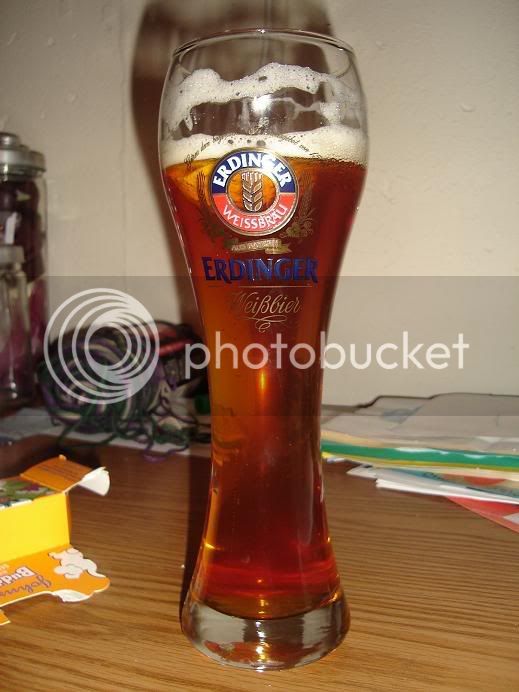Dominator6
Well-Known Member
So my first brew has a sweet smell to it and a little different taste. Kind of like an Ale taste(it's a Hefe btw). Just curious, bad batch, off flavor???? Thanks in advance!

Dominator6 said:sweet smell and odd flavor would go away but it hasn't.


Dycokac said:that's pretty clear for a hefeMine are alot cloudier than that but i don't do irish moss or anything.
StallionMang said:A cardboard taste usually indicates that the beer was oxidized, either because it was splashed around too much before it had cooled to below 80 deg after the boil, or because it was exposed to air at some point after the fermentation process began. Did you siphon properly when you were transferring the beer from one container to another?
YooperBrew said:Some say it's almost impossible for homebrewers to get, some say it's not. The idea, just in case, is to not splash or aerate your wort until it gets to below 80 degrees. That would prevent HSA. After it's cooled and before fermentation starts is a good time to aerate.
 I think I'm gonna be attempting Bobby_M's counterflow chiller as soon as I find copper for a fair price.
I think I'm gonna be attempting Bobby_M's counterflow chiller as soon as I find copper for a fair price.srm775 said:That was my first thought also. That is one clear and red hefe. Hefe's are supposed to be very cloudy and should be yellow to gold in color. Do you bottle or keg? If you bottle, make sure you mix up your yeast before finishing the pour, if you keg, then it appears as though you used a fining agent or a high floc. yeast which could lead to the "bland" flavor.
Enter your email address to join: